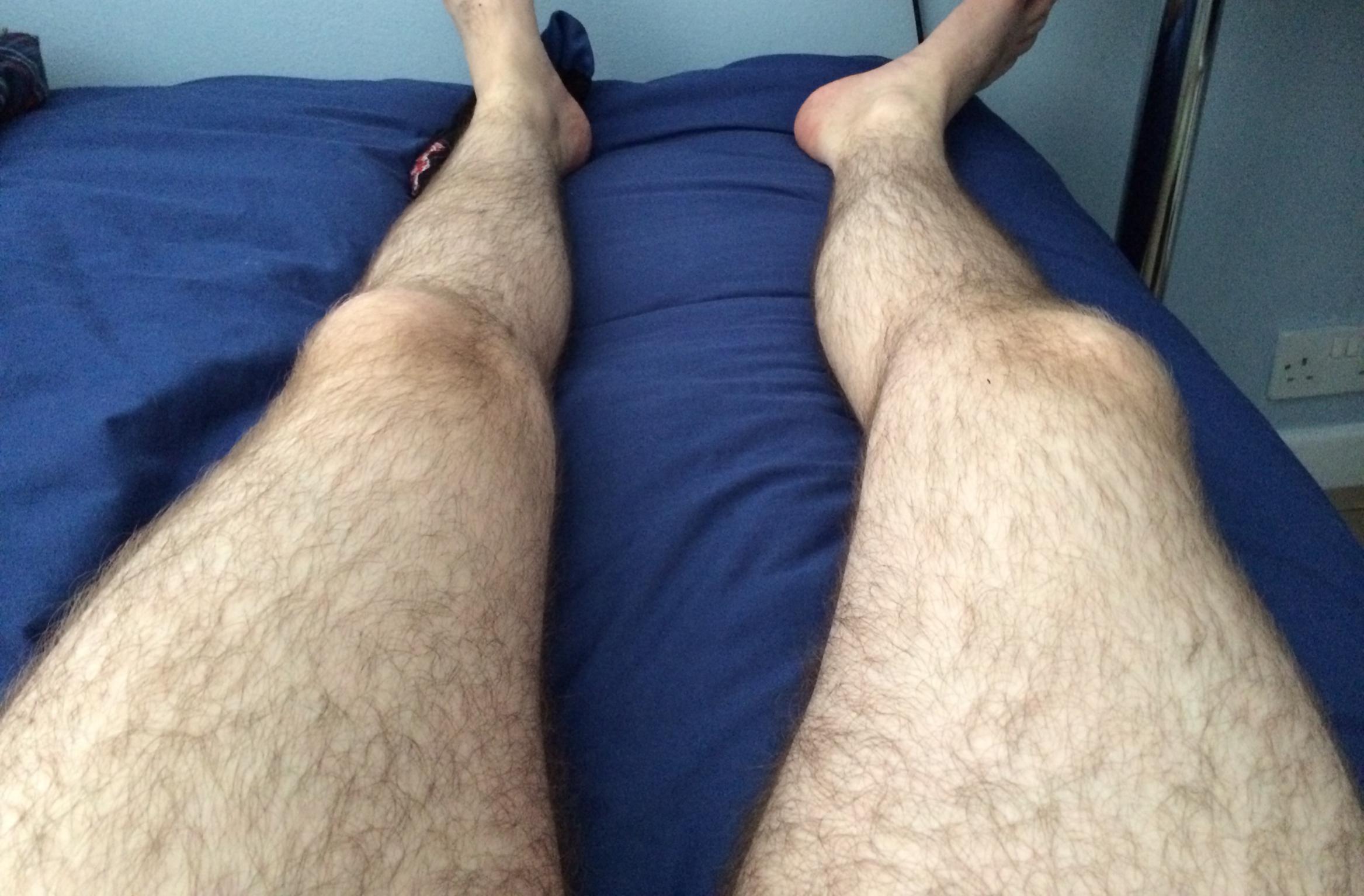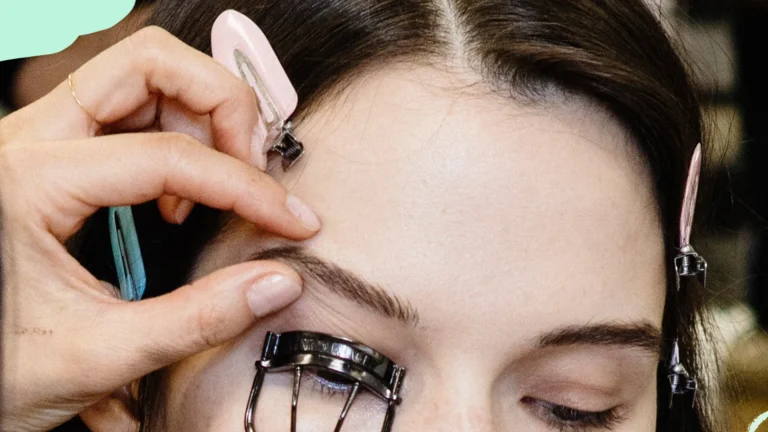Why Are My Legs So Hairy?
Your leg hair amount is influenced by genes, hormones, and personal choices. Genes decide how much and where hair grows on your legs. Hormones, especially during puberty or pregnancy, can affect this too. Cultural norms and personal choices, like whether you shave or not, also matter.
Some medical conditions or medicines can make hair grow more. Everyone’s leg hair is different because of a mix of genes and lifestyle choices. So, your leg hair is kind of like a unique combination of your family traits and your personal decisions about grooming.
How Do Genetics Influence Hair Growth?

Genetics influence hair growth by providing the instructions that determine the characteristics of our hair follicles. The genetic code inherited from our parents plays an important role in shaping the way our hair grows.
Genes dictate the density, thickness, and pattern of hair follicles. Whether your hair is fine or coarse, straight or curly, is influenced by your genetic makeup.
The entire life cycle of hair growth, including the phases of growth, rest, and shedding, is regulated by genes. This cycle determines how long each hair strand stays in the growing phase and when it naturally falls out.
Families often share similar hair traits due to the passing down of specific genetic information. If your parents or grandparents have certain hair characteristics, you’re more likely to inherit similar features.
The combination of genes from both parents creates a unique genetic code for each individual, contributing to the diversity in hair growth patterns and characteristics.
How do hormones impact leg hair growth?
Hormones impact leg hair growth by influencing the hair growth cycle and the characteristics of hair follicles. During puberty, hormonal changes, especially an increase in androgens like testosterone, stimulate the growth of thicker and darker leg hair. This is why there’s often an increase in leg hair growth during adolescence.
Hormonal fluctuations throughout the menstrual cycle can affect the growth and thickness of leg hair. Some individuals may notice variations in hair growth during different phases of their menstrual cycle.
Hormonal changes during pregnancy, particularly elevated levels of certain hormones like estrogen, can influence hair growth. Some pregnant individuals may experience changes in leg hair thickness and density.
The hormonal changes that accompany menopause, including a decrease in estrogen levels, can impact leg hair growth. In some cases, hair may become finer or less dense.
Hormonal imbalances caused by medical conditions, such as polycystic ovary syndrome (PCOS) or thyroid disorders, can affect leg hair growth. Individuals with these conditions may experience changes in hair thickness and distribution.
Medical Factors
Several medical conditions can influence the growth of leg hair, leading to noticeable changes in thickness, density, or the overall pattern of hair.
One significant condition is Polycystic Ovary Syndrome (PCOS), a hormonal disorder commonly affecting individuals with ovaries. PCOS often results in elevated androgen levels, contributing to increased body hair, including leg hair.
Medications and Their Impact on Leg Hair
Certain medications, while serving essential medical purposes, can bring about changes in leg hair growth as a side effect.
Medications used in cancer treatment, hormonal therapies (such as birth control), and immunosuppressants are examples that may influence hair texture or even lead to hair loss.
The potential impact of medications on leg hair is vital for individuals undergoing specific treatments. Patients and healthcare providers should communicate openly about possible side effects, including changes in hair growth, to ensure informed decision-making and proactive management.
This awareness contributes to a holistic approach to healthcare, where individuals can anticipate and address changes in leg hair as part of their overall well-being.
What are effective tips for maintaining healthy skin while managing leg hair?
Maintaining healthy skin while managing leg hair involves a combination of proper skincare and hair removal practices. Here are some effective tips
Keep your skin well-hydrated by using a moisturizer regularly. This helps prevent dryness and irritation, especially after shaving or using hair removal methods.
Choose hair removal methods that are gentle on the skin, such as shaving with a sharp, clean razor, using depilatory creams, or opting for waxing by a professional. Avoid harsh or aggressive techniques that may cause skin irritation.
Incorporate regular exfoliation into your skincare routine to remove dead skin cells. This can help prevent ingrown hairs and promote smoother skin.
Be mindful of the products you use on your skin. Avoid harsh chemicals, fragrances, or ingredients that may cause irritation. Opt for products specifically designed for sensitive skin if needed.
After hair removal, apply a soothing lotion or aloe vera gel to calm the skin. Avoid tight clothing immediately after hair removal to reduce friction and irritation.
Protect your skin from harmful UV rays by applying sunscreen when exposing your legs to the sun. This helps prevent sun damage and maintains overall skin health.
Adopting a healthy lifestyle, including a balanced diet, regular exercise, and staying hydrated, contributes to the overall health of your skin.
How do I make my legs not hairy?

To achieve smooth and hair-free legs, you can choose from various hair removal methods. Here’s a guide to help you make your legs less hairy
Shaving
- Use a sharp, clean razor.
- Shave in the direction of hair growth to prevent irritation.
- Moisturize after shaving to keep the skin hydrated.
Waxing
- Apply hot or cold wax to the leg area.
- Place a cloth strip over the wax and pull it off quickly, removing hair from the roots.
Depilatory Creams
- Apply the cream to your legs, following the product instructions.
- Wipe or wash away the cream, which dissolves hair at the skin’s surface.
Epilation Devices
- Use an epilator to pluck hair from the roots.
- Choose devices with features like massage rollers for a more comfortable experience.
Laser Hair Removal
- Consider professional laser hair removal for long-term reduction in hair growth.
- Multiple sessions may be required for optimal results.
Sugaring
- Apply a sugar-based paste against hair growth.
- Pull off the paste in the direction of hair growth for a natural hair removal method.
Threading
- Use a twisted thread to remove hair from smaller areas.
- Requires skill, so consider professional services.
Electrolysis
- Go for electrolysis for a permanent hair removal solution.
- A professional uses an electric current to destroy hair follicles.
FAQ
Is it OK to have hairy legs as a girl?
Yes, it is completely OK to have hairy legs as a girl. Society’s expectations around body hair are evolving, and women have the freedom to decide whether to keep or remove leg hair based on personal preference.
Are long legs on a girl attractive?
Attraction is subjective, and beauty standards vary. Some people find long legs on a girl attractive, while others appreciate different physical features. Ultimately, attractiveness is diverse and personal.
How long can girls leg hair get?
The length of leg hair can vary greatly among individuals. There is no specific limit, and it depends on factors like genetics and personal grooming choices.
Is it normal for a girl to have hair on her bum?
Yes, it is entirely normal for girls to have hair on their bum. Body hair, including on the buttocks, is a natural and common occurrence among individuals of all genders.
Is upper lip hair normal for a woman?
Yes, upper lip hair is normal for women. It’s a common part of natural hair growth, influenced by genetics and hormonal factors. The presence of upper lip hair varies among individuals.
What are the disadvantages of removing upper lip hair?
The disadvantages of removing upper lip hair can include potential skin irritation, redness, and the risk of ingrown hairs. Some hair removal methods may cause discomfort, and frequent removal can lead to skin sensitivity.
Final thoughts
In summary, the amount of hair on your legs is determined by genetics, hormones, and personal choices. Whether you prefer to keep your natural leg hair or opt for hair removal methods, it’s a personal decision.
Being aware of these factors allows you to make choices that align with your comfort and preferences. There’s no right or wrong answer, and the key is to feel confident and at ease with your choice, whether that’s embracing natural leg hair or choosing a smooth look.



